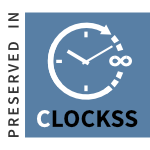Solving Strategy for Silicon Carbide Epitaxial Layer Thickness Based on Nonlinear Least Squares Method
DOI:
https://doi.org/10.63313/FE.9001Keywords:
Nonlinear Least Squares Method, Fresnel Equations, Hybrid Interference Model, Drude Model, Differential EvolutionAbstract
Silicon Carbide (SiC) is a pivotal semiconductor material for next-generation high-power and high-frequency electronics, where precise measurement of its epitaxial layer thickness is crucial. This paper presents a robust method for determining this thickness using infrared interference and a nonlinear least squares optimization framework.
We first establish a dual-beam interference model based on the Fresnel equations and Snell's law, deriving reflectivity as a function of thickness and wavelength. The Drude model is incorporated to account for the refractive index dispersion influenced by carrier concentration. For thickness inversion, experimental reflectivity data from SiC wafers is processed by excluding the anomalous "reststrahlen band" (700-1000 cm⁻¹). A hybrid algorithm combining differential evolution for global initial guess generation and nonlinear least squares for local refinement is implemented, yielding a thickness of 7.921 μm with a high goodness-of-fit (R² ≈ 0.94).
Furthermore, we analyze multi-beam interference, deriving its necessary conditions: high interface reflectivity, sufficient coherence length, and layer stability. An adaptive hybrid interference model is developed, dynamically applying dual or multi-beam theory based on local optical conditions. Applied to silicon wafer data, it identifies multi-beam regions and calculates a thickness of 3.765 μm. Re-evaluating the SiC data with this model and a region-weighted strategy to mitigate multi-beam effects in the 399.7-666.3 cm⁻¹ band yields an optimized thickness of 7.049 μm. This work provides a reliable and adaptable framework for high-precision thickness characterization in semiconductor engineering.
References
[1] Wang, P.S., Zhang, W.L., Fan, Z.X., et al. (2008) Accurate Fitting Analysis of SiO₂ Film Re-fractive Index. Chinese Journal of Lasers, 05, 760-763.Hu, T. and Desai, J.P. (2004) Soft-Tissue Material Properties under Large Deformation: Strain Rate Effect. Proceedings of the 26th Annual International Conference of the IEEE EMBS, San Francisco, 1-5 Sep-tember 2004, 2758-2761.
[2] Guo, X.H., Zhang, M.X. (2016) Extended Research on Multi-Beam Interference. Journal of Tianshui Normal University, 36, 13-14.
[3] Wu, N.Z. (1984) Application of Laser Technology in Measuring Thin Film Optical Parame-ters. Optoelectronics·Laser, 03, 19-25.
[4] Mardan, T., Fan, C.F., Li, X.W., et al. (2020) Infrared Optical Properties and Application of One-Dimensional 4H-SiC Grating. Journal of Infrared and Millimeter Waves, 39, 221-227.
[5] Niu, Y.X., Liu, M., Yuan, S., et al. (2023) Test of Silicon Carbide Epitaxial Layer Thickness—Infrared Reflection Method. GB/T 42905-2023.
[6] Mo, X.Q. (2019) Linear and Nonlinear Fitting Based on Least Squares Method. Wireless In-ternet Technology, 16, 128-129.
Downloads
Published
Issue
Section
License
Copyright (c) 2025 by author(s) and Erytis Publishing Limited.

This work is licensed under a Creative Commons Attribution 4.0 International License.





















